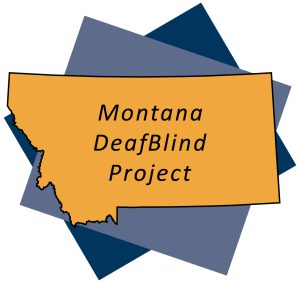
The goal of the Montana DeafBlind project is to increase the early identification of children who are DeafBlind or who are at-risk of becoming DeafBlind. Work between the National Center on DeafBlindness and state DeafBlind projects has focused on improving outcomes for this group of children by providing information, resources and training.
- Which infants and toddlers might qualify for the National DeafBlind Child Count
- MTDB Referral Checklist (PDF)
- MTDB Referral Checklist (DOCX)
- A Tool for Identifying Vision and Hearing Loss in Children with Multiple Disabilities (PDF)
- Promoting Early Identification and Intervention for Children Who Are Deaf or Hard of Hearing, Children with Vision Impairment, and Children with DeafBlind Conditions
- Complete the Montana DeafBlind Census Form.
Access additional child count information on the Montana DeafBlind project’s National Child Count initiative page.
Resources for this initiative include:
- National Center on DeafBlindness Early Identification and Referral Initiative
- The Sooner the Better: A Framework for Training Early Intervention Practitioners on DeafBlindness
- Early Identification and Referral Toolbox
- Early Identification of Infants Who Are DeafBlind – A report on early identification needs in the field of DeafBlindness, and steps NCDB has taken to address them
- Washington Sensory Disabilities Services – access video drop down menu for topics by age groups
- InfantSEE.org – Participating doctors of optometry provide a comprehensive infant eye assessment between 6 and 12 months of age free of charge regardless of family income or access to insurance coverage.
State Resources for this Initiative include:
- Montana Milestone Part C Early Intervention Program– Contact Part C for list of community providers
- Children’s Special Health Services
- Montana Medical Home Portal


